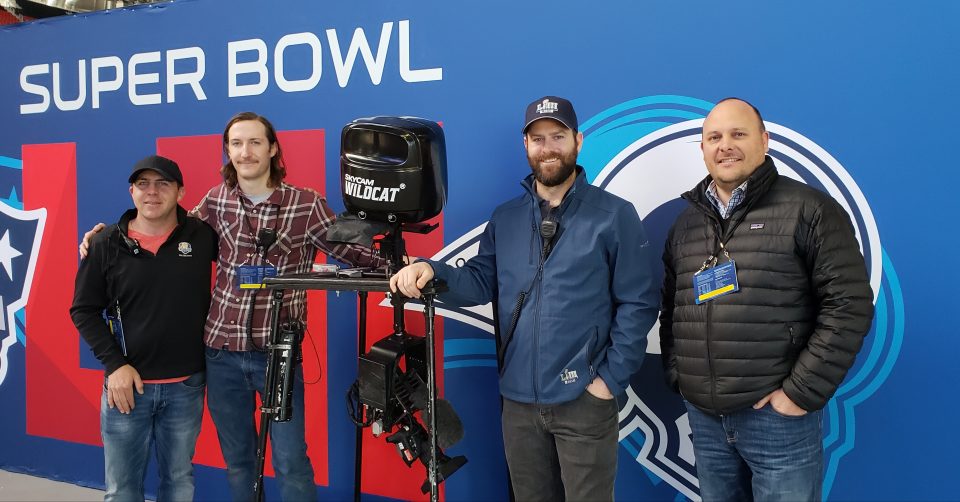Following Super Bowl Success, Skycam Preps for Inaugural AAF Season
Dual Skycams will be deployed for all 43 games
Story Highlights
According to Skycam CTO Steve Wharton, the three weeks after a Super Bowl are usually a time when he and his team can take a breath. That’s not the case this year. This weekend, they will be at full speed, beginning production efforts on the Alliance of American Football (AAF) season, with dual Skycams used for all 43 games: four games a week for 10 weeks, two playoff games, and the Championship on April 27 at Sam Boyd Stadium in Las Vegas.
“Every game will have duals, and the interesting part of that is the C shows will be operated remotely,” says Wharton. “The pilots will be onsite, but the operators will be [working] out of Sneaky Big Studios [in Scottsdale, AZ].”
And, as if the AAF games aren’t enough to keep Skycam busy, there is Red Bull Crashed Ice in Boston on Feb. 8 and 9, Showtime boxing in California on Feb. 9, and preparations for next weekend’s NBA All-Star game.

SkyCam’s team at Super Bowl LIII (l-to-r): Eric Van Gorp, Robert Smith, Jacob McGrath, and Steve Wharton.
The AAF will have two games on Feb. 9 and two on Feb. 10. The production team will be able to tap into some Super Bowl-quality production talent: Austin Ellsworth, one of the Skycam operators for Super Bowl LIII, lives in Phoenix and will be able to head to Scottsdale to work the games.
“It’s very exciting,” says Wharton. “At the rehearsal events, we did a lot of things we’ve never been able to do before because of NFL rules. We’ll be able to do defensive looks, a lot of off-axis sideline looks — especially in the red zone, where we know passes are going to be less than 20 yards. In those instances, the Skycam will be along the sideline operating like a traditional camera cart. But then we’ll be able to fly down the sideline or towards the action. And that is an interesting look that no one has seen yet.”
He adds that, for the C-level games, which have fewer cameras, the high Skycam will be used a lot for live action, with the low camera used as an iso for first replay.
“It’s a very aggressive, Skycam-centric show, so we’re blessed to have that opportunity,” Wharton says. “A lot of our guys have been doing Skycam for 18 years, and now we can show what we can do without all the restrictions. Sometimes, those restrictions are good, but, other times, we think we can bring more.”
The Sneaky Big relationship began at NAB 2017, and tests with CBS Sports have proved that a Skycam operator, like the SMT virtual-graphics operator, can be based in the studio and, via fiber, control the camera at a stadium thousands of miles away.
Latency is one of the big concerns, but Wharton says it has not been an issue in tests. “A test we did at San Antonio had 42 ms of delay between Sneaky Big and the stadium, and that is pretty fast,” he explains. “You want to be less than 100 ms.”
The four teams out west – the Arizona Hotshots, Salt Lake Stallions, San Antonio Commanders, and San Diego Fleet — are close enough to keep latency well within 100 ms. The four teams in the East — the Atlanta Legends, Birmingham Iron, Memphis Express, and Orlando Apollos — should have no more than 80 ms of delay.
The use of Sneaky Big with the related reduction in travel costs for operators is key to allowing the AAF to use technologies that are often out of reach financially for a new league.
Says Wharton, “It allows the AAF to have a lower price point to get duals on every game.”
